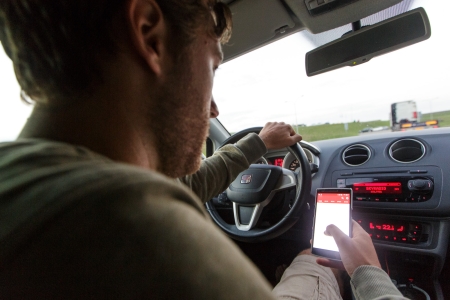Cyclists
Research shows that cyclists who text or converse on the phone, cycle at a lower average speed, more often miss relevant matters and more often exhibit dangerous behaviour (such as wrong-way cycling, crossing an intersection with poor visibility of approaching traffic without braking or looking around first). Texting appears to affect cycling behaviour most. Cyclists who are texting cycle more towards the middle of the bicycle track/lane and swerve more than when they are not texting. When texting, cyclists less often look around, and also look at the bicycle track/lane less often and for a shorter period of time [56]. Furthermore cyclists themselves experience texting as the most dangerous activity [10].
Cyclists listening to music often miss important auditory information from traffic around them (a bicycle bell, horn), particularly those cyclists who are using in-ear headphones’[i] or listening to loud or up-tempo music [36]. It has been observed that cyclists listening to music more often display behaviour that violates traffic rules or display other unsafe behaviour, e.g. jumping traffic lights, wrong-way cycling, or using the pedestrian crossing [57]. Listening to music does not appear to affect cycling speed, lateral position or glance behaviour.
Pedestrians
Pedestrians using a phone while walking display less safe (crossing) behaviour: they are more careless, take longer to cross the road, or cross when a car is approaching [58]. Particularly phoning and texting lead to less safe behaviour, whereas listening to music affects behaviour to a lesser extent [13] [59]. Texting pedestrians walk more slowly, less often maintain a straight course and are more unsteady [60]; they also bump into something or someone more often, while someone else also bumps into them more often [13].
[i] In-ear phones are earphones placed in the auditory duct.
